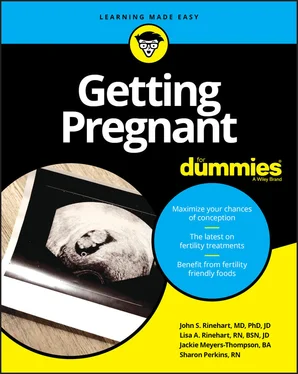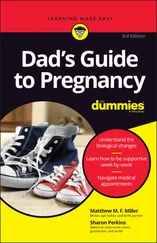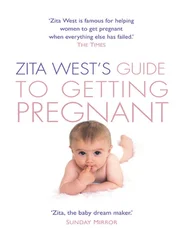1 ...6 7 8 10 11 12 ...29 The vagina secretes fluid during sexual arousal, making it easier — and a lot more enjoyable! — for a penis to enter the vagina. Sometimes (especially when you have to have sex at a particular time), the lubrication function may not work as well as it should. In these cases, you may need a personal lubricant. This is much better for your vagina than trying to have a “dry experience,” which causes abrasion of the vagina and will make intercourse that much more uncomfortable the next time.
 There is an entire industry that has grown up over lubricants, intercourse, and fertility. Does it really make that much difference? Maybe. For example, Vaseline is a terrible lubricant because it is too thick. Some lubricants may actually kill sperm. So if you want to spend money on lubricants that have been designed for couples trying to conceive, go ahead. If you want to be practical, plain old vegetable oil, the kind you cook with, is just as good.
There is an entire industry that has grown up over lubricants, intercourse, and fertility. Does it really make that much difference? Maybe. For example, Vaseline is a terrible lubricant because it is too thick. Some lubricants may actually kill sperm. So if you want to spend money on lubricants that have been designed for couples trying to conceive, go ahead. If you want to be practical, plain old vegetable oil, the kind you cook with, is just as good.
 In very rare cases, the uterus and vagina of some women do not develop normally and may be missing, even though the ovaries function properly and external genitalia are normal. The formal name of this syndrome is Mayer-Rokitansky-Küster-Hauser, a condition that is usually diagnosed when you don’t start your periods by age 16.
In very rare cases, the uterus and vagina of some women do not develop normally and may be missing, even though the ovaries function properly and external genitalia are normal. The formal name of this syndrome is Mayer-Rokitansky-Küster-Hauser, a condition that is usually diagnosed when you don’t start your periods by age 16.
Found at the entrance to the vagina, the hymen is a nonfunctional piece of circular tissue that has no physiologic function and very few nerve endings. This donut-shaped piece of tissue generally has one or more small opening(s) at birth and, as the baby girl grows, the tissue thins and stretches. While bleeding during a woman’s first act of intercourse is often described as “tearing the hymen,” in truth, by the time a girl reaches adolescence, the hymen is not usually a barrier to tampons or an erection. An imperforate hymen, one that has no holes, occurs in less than ½ percent of the female population and can be corrected with a very simple procedure to snip open the hymen. Women with an imperforate hymen will not have periods (amenorrhea), as the hymen can cause blood to back up behind the small opening. This blood can be forced back up into the fallopian tubes. Women with an imperforate hymen have a higher incidence of endometriosis, a disease that can affect your ability to get pregnant in several ways. (See Chapter 7for more on endometriosis.)
The cervix is the lower part of the uterus. It keeps the baby from falling out of the uterus when you’re pregnant because it’s a tight, muscle-like tissue. The cervix also guards against infection because it’s filled with mucus that forms a barrier between your vagina and the inside of the uterus. If you have an incompetent cervix, it means that the cervix doesn’t stay tight and closed when you’re pregnant but starts to open up from the expansion of the uterus and the weight of the growing baby. The hallmark of an incompetent cervix is painless, cervical dilation in the second trimester of pregnancy. An incompetent cervix is usually stitched with a suture called a cerclage. Issues with an incompetent cervix do not appear until the second trimester when the baby is larger, so a cerclage is not placed until the early second trimester at around 16–18 weeks.
The uterus, or womb, is a pear-shaped organ designed to hold and nourish a baby for nine months. The uterus acts as an incubator for the pregnancy, allowing the child to develop to a stage that it can exist in the environment on its own. But the uterus also has to be structured for labor, which allows delivery of the child. So it has two functional layers: an interior lining for implantation and growth of the pregnancy (endometrium) and a muscular layer for labor (myometrium). Every month the lining of the uterus, called the endometrium, thickens to make a nourishing bed for an embryo. If you don’t get pregnant that month, the lining breaks down and is shed as your menstrual flow, or period.
Nonconformity is (usually) okay
Many women have a uterus that doesn’t conform to the standard upside-down pear shape you’ve probably seen in pictures marked “this is your uterus.” Much has been said about the position of the uterus, but in reality, it makes no difference. Most women have a uterus that points to the pubic bone, which is considered the normal position (also called an anteverted uterus). Twenty percent of women have a uterus that points toward their back (called a “tipped” or retroverted uterus), which, contrary to what many women believe, does not cause problems getting pregnant. However, the real situation is that when a woman is in the upright position, the uterus is parallel to the floor. Since primitive humans were upright most of the time, this is the natural opposition of the uterus and only when gynecologists started examining women lying down did this become an issue. Mother nature probably could care less which way the uterus faces.
Abnormalities that can affect fertility
 Around 2 to 3 percent of women have a uterus that is abnormal in its size, shape, or structure. The uterus starts as two separate tubes, which should then join. Once joined, the wall separating the two tubes is dissolved. Sometimes errors in the shape of the uterus occur because there was a failed joining of the tubes (fusion defects) or because the wall does not dissolve (canalization defects). It’s hard to know how many women have uterine anomalies because most women do not have tests to determine the shape of their uterus, so the occurrence will be different for women without infertility and infertile patients who undergo testing. The most common uterine anomaly is the arcuate uterus, which is a very mild fusion problem. The very last part of the tubes fails to join, leaving a somewhat heart-shaped uterus. This type of uterine anomaly does not impact fertility or miscarriage, but it is reported whenever imaging of the uterus (usually using ultrasound) is done — which can cause concern if no one tells you that this is not an important finding. It’s like distinguishing brown eyes from blue eyes; interesting but not predictive of infertility.
Around 2 to 3 percent of women have a uterus that is abnormal in its size, shape, or structure. The uterus starts as two separate tubes, which should then join. Once joined, the wall separating the two tubes is dissolved. Sometimes errors in the shape of the uterus occur because there was a failed joining of the tubes (fusion defects) or because the wall does not dissolve (canalization defects). It’s hard to know how many women have uterine anomalies because most women do not have tests to determine the shape of their uterus, so the occurrence will be different for women without infertility and infertile patients who undergo testing. The most common uterine anomaly is the arcuate uterus, which is a very mild fusion problem. The very last part of the tubes fails to join, leaving a somewhat heart-shaped uterus. This type of uterine anomaly does not impact fertility or miscarriage, but it is reported whenever imaging of the uterus (usually using ultrasound) is done — which can cause concern if no one tells you that this is not an important finding. It’s like distinguishing brown eyes from blue eyes; interesting but not predictive of infertility.
The most common variation in the shape of the uterus that can impact fertility and miscarriage rate is caused by a canalization defect and called a septate uterus, which means that a band of tissue (septum) partially or completely divides the inside of the uterus. This is a congenital condition that occurs while a female fetus is developing in utero when the wall is not properly dissolved. It can affect all or part of the wall so there are many variations on how much of a septum occurs. Septate uterus occurs in multiple forms in less than 3 percent of all women. Fusion defects can create a uterus with two horns (bicornuate) or two separate uteri or even two cervices and two vaginas. Sometimes only one tube forms and thus only one side of the uterus develops, and there is no fallopian tube on that side since the fallopian tubes also develop from the initial tube. This is called a unicornuate (one horn). Depending upon the extent of the abnormality, women who have bicornuate and unicornuate uteri usually do not have problems conceiving or keeping a pregnancy. Fusion defects may result in pregnancy complications such as premature labor or malpresentation of the fetus such as a breech. Treatment for uterine defects depends upon which defect is present, the pregnancy history of the woman, and how severe the defect is. In general, only canalization defects are treated, and these require surgery.
Читать дальше

 There is an entire industry that has grown up over lubricants, intercourse, and fertility. Does it really make that much difference? Maybe. For example, Vaseline is a terrible lubricant because it is too thick. Some lubricants may actually kill sperm. So if you want to spend money on lubricants that have been designed for couples trying to conceive, go ahead. If you want to be practical, plain old vegetable oil, the kind you cook with, is just as good.
There is an entire industry that has grown up over lubricants, intercourse, and fertility. Does it really make that much difference? Maybe. For example, Vaseline is a terrible lubricant because it is too thick. Some lubricants may actually kill sperm. So if you want to spend money on lubricants that have been designed for couples trying to conceive, go ahead. If you want to be practical, plain old vegetable oil, the kind you cook with, is just as good. In very rare cases, the uterus and vagina of some women do not develop normally and may be missing, even though the ovaries function properly and external genitalia are normal. The formal name of this syndrome is Mayer-Rokitansky-Küster-Hauser, a condition that is usually diagnosed when you don’t start your periods by age 16.
In very rare cases, the uterus and vagina of some women do not develop normally and may be missing, even though the ovaries function properly and external genitalia are normal. The formal name of this syndrome is Mayer-Rokitansky-Küster-Hauser, a condition that is usually diagnosed when you don’t start your periods by age 16.










